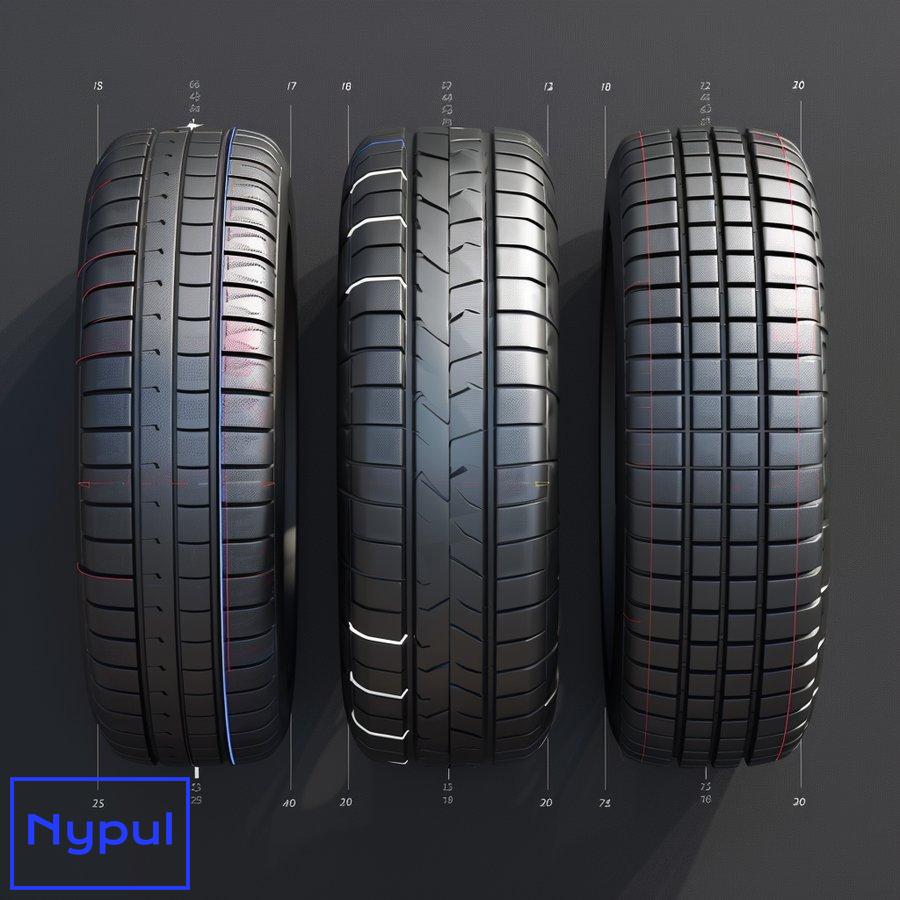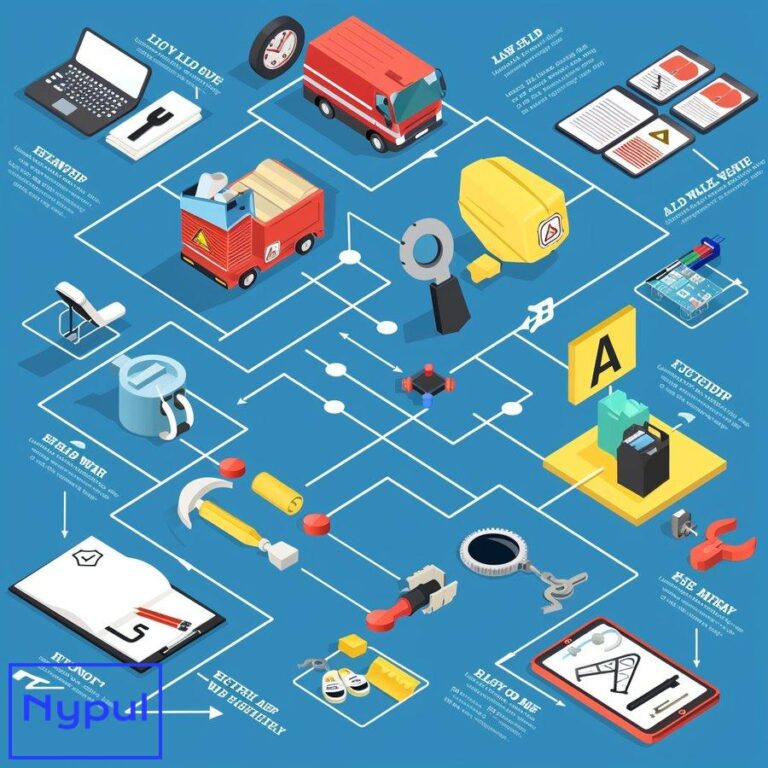How Can Fuel Efficiency Be Improved
What is fuel efficiency and why does it matter?
Fuel efficiency refers to the amount of energy a vehicle can extract from its fuel to propel itself forward. It is typically measured in miles per gallon (mpg) in the United States or kilometers per liter (km/L) in many other countries. A fuel-efficient vehicle requires less fuel to travel a given distance compared to a less efficient one.
Fuel efficiency matters for several crucial reasons:
Cost savings: The most immediate benefit of fuel efficiency is reduced fuel costs for vehicle owners. With fluctuating gas prices, a more efficient vehicle can lead to significant savings over time. For example, upgrading from a vehicle that gets 20 mpg to one that gets 30 mpg could save an average driver over $500 per year in fuel costs, based on driving 15,000 miles annually at $3 per gallon.
Environmental impact: Burning fossil fuels releases greenhouse gases like carbon dioxide into the atmosphere, contributing to climate change. More fuel-efficient vehicles produce fewer emissions per mile driven, helping to reduce their environmental footprint. According to the U.S. Environmental Protection Agency, a vehicle that improves from 20 mpg to 25 mpg reduces its carbon dioxide emissions by about 1.7 tons per year.
Energy security: Improved fuel efficiency reduces a nation’s overall oil consumption, decreasing dependence on foreign oil imports. This enhanced energy security can have positive geopolitical and economic implications.
Regulatory compliance: Many countries have implemented fuel efficiency standards for vehicles. In the United States, Corporate Average Fuel Economy (CAFE) standards require automakers to achieve specific fleet-wide fuel economy targets. Failure to meet these standards can result in significant fines.
Technological innovation: The push for greater fuel efficiency drives innovation in the automotive industry, leading to advancements in engine technology, lightweight materials, aerodynamics, and alternative powertrains like hybrid and electric vehicles.
To illustrate the impact of fuel efficiency improvements, consider the following comparison:
| Vehicle Type | Fuel Efficiency | Annual Fuel Cost* | Annual CO2 Emissions |
|---|---|---|---|
| SUV | 20 mpg | $2,250 | 8.8 tons |
| Midsize Sedan | 30 mpg | $1,500 | 5.9 tons |
| Hybrid | 50 mpg | $900 | 3.5 tons |
*Based on 15,000 miles driven annually at $3 per gallon
As this table demonstrates, the choice of a more fuel-efficient vehicle can lead to substantial cost savings and emissions reductions over time. For instance, switching from an SUV to a hybrid could save $1,350 in annual fuel costs while reducing CO2 emissions by 5.3 tons per year.
Fuel efficiency is not just about the vehicle itself; it’s also influenced by driving habits, maintenance practices, and external factors like road conditions and weather. Understanding these various elements can help vehicle owners and fleet managers maximize their fuel efficiency, leading to cost savings and reduced environmental impact.
How does regular vehicle maintenance improve fuel economy?
Regular vehicle maintenance plays a crucial role in maintaining and even improving fuel economy. Proper upkeep ensures that all vehicle systems operate at peak efficiency, minimizing unnecessary fuel consumption. Here’s how specific maintenance tasks contribute to better fuel economy:
Engine tune-ups: A well-tuned engine operates more efficiently, consuming less fuel. Regular tune-ups involve replacing spark plugs, adjusting the idle speed, and checking the ignition system. A properly tuned engine can improve fuel economy by up to 4%, according to the U.S. Department of Energy.
Air filter replacement: A clean air filter allows the engine to “breathe” more easily, reducing the energy required to draw in air for combustion. Replacing a clogged air filter can improve fuel economy by up to 10% in older vehicles with carbureted engines. While the impact is less dramatic in modern fuel-injected engines, a clean air filter still contributes to overall engine health and efficiency.
Oil changes: Fresh, clean oil reduces friction within the engine, allowing it to operate more smoothly and efficiently. Using the manufacturer-recommended grade of motor oil can improve fuel economy by 1-2%. Synthetic oils often provide even better fuel economy due to their superior lubricating properties.
Tire maintenance: Proper tire inflation is critical for fuel efficiency. Underinflated tires increase rolling resistance, forcing the engine to work harder. The U.S. Department of Energy states that maintaining proper tire pressure can improve fuel economy by up to 3%. Regular tire rotations and alignments also contribute to better fuel economy by ensuring even tire wear and reducing drag.
Fuel system cleaning: Over time, deposits can build up in the fuel system, reducing efficiency. Periodic fuel system cleaning, either through the use of fuel additives or professional service, can restore lost fuel economy.
Brake maintenance: Dragging brakes create unnecessary resistance, forcing the engine to work harder. Regular brake inspections and maintenance ensure that brakes release fully when not in use, optimizing fuel economy.
Wheel alignment: Proper wheel alignment reduces rolling resistance and ensures that the vehicle travels straight without the engine having to compensate for misalignment. This can lead to fuel savings of up to 10% in severe cases.
To illustrate the potential impact of regular maintenance on fuel economy, consider this comparison:
| Maintenance Task | Potential Fuel Economy Improvement | Annual Savings* |
|---|---|---|
| Engine tune-up | Up to 4% | $90 |
| Air filter replacement | Up to 10% (older vehicles) | $225 |
| Oil change (correct grade) | 1-2% | $22-$45 |
| Proper tire inflation | Up to 3% | $67 |
| Wheel alignment | Up to 10% (severe cases) | $225 |
*Based on 15,000 miles driven annually at $3 per gallon, 25 mpg baseline
These figures demonstrate that comprehensive vehicle maintenance can lead to significant fuel savings over time. For example, if all these maintenance tasks were performed on a vehicle that previously had severe issues, the combined effect could potentially improve fuel economy by nearly 30%, translating to annual savings of over $600.
It’s important to note that while some maintenance tasks can be performed by vehicle owners, others require professional service. Following the manufacturer’s recommended maintenance schedule is crucial for maintaining optimal fuel efficiency and overall vehicle performance.
Regular maintenance not only improves fuel economy but also extends the life of the vehicle, reduces the likelihood of breakdowns, and maintains the vehicle’s resale value. By investing in proper maintenance, vehicle owners can realize long-term savings that far outweigh the initial costs of upkeep.
Which driving habits can significantly boost fuel efficiency?
Driving habits have a profound impact on fuel efficiency. By adopting fuel-efficient driving techniques, motorists can significantly reduce their fuel consumption without making any changes to their vehicles. Here are key driving habits that can boost fuel efficiency:
Smooth acceleration and deceleration: Aggressive driving, characterized by rapid acceleration and hard braking, can lower fuel economy by up to 33% at highway speeds and 5% around town, according to the U.S. Department of Energy. Gradual acceleration and coasting to decelerate when possible can dramatically improve fuel efficiency.
Maintaining a steady speed: Constant changes in speed are inefficient. Using cruise control on highways can help maintain a steady speed, improving fuel economy. However, in hilly terrain, manually controlling speed may be more efficient.
Observing speed limits: Fuel economy typically decreases rapidly at speeds above 50 mph (80 km/h). The U.S. Department of Energy estimates that each 5 mph (8 km/h) driven over 50 mph is like paying an additional $0.18 per gallon for gas.
Avoiding excessive idling: Modern engines don’t need to be “warmed up” by idling. Excessive idling wastes fuel and increases emissions. If you anticipate being stationary for more than 10 seconds (except in traffic), it’s more fuel-efficient to turn off the engine.
Planning and combining trips: Several short trips taken from a cold start can use twice as much fuel as one longer, multipurpose trip covering the same distance when the engine is warm. Planning and combining errands into one trip can significantly reduce fuel consumption.
Avoiding rush hour when possible: Stop-and-go traffic significantly reduces fuel efficiency. If possible, plan trips to avoid peak traffic times.
Using the right gear: For manual transmission vehicles, using the highest gear appropriate for the speed and road conditions reduces engine strain and improves fuel efficiency.
Minimizing air conditioning use: Air conditioning can reduce fuel economy by up to 25% in very hot conditions. At lower speeds, opening windows is more efficient. At highway speeds, however, open windows increase drag, making air conditioning the more efficient choice.
To illustrate the potential impact of these driving habits, consider the following comparison:
| Driving Scenario | Fuel Economy | Annual Fuel Cost* | Potential Savings |
|---|---|---|---|
| Aggressive driving | 20 mpg | $2,250 | – |
| Moderate driving | 25 mpg | $1,800 | $450 |
| Efficient driving | 30 mpg | $1,500 | $750 |
*Based on 15,000 miles driven annually at $3 per gallon
This table demonstrates that adopting efficient driving habits could potentially improve fuel economy by up to 50% compared to aggressive driving, resulting in significant annual savings.
It’s worth noting that the impact of these habits can vary depending on the vehicle type, road conditions, and other factors. However, consistently practicing these techniques can lead to substantial improvements in fuel efficiency over time.
Many modern vehicles come equipped with fuel economy displays that provide real-time feedback on fuel consumption. Using these tools can help drivers understand how their driving habits affect fuel efficiency and encourage more economical driving.
By consciously adopting these fuel-efficient driving habits, motorists can not only save money on fuel costs but also reduce their environmental impact and extend the life of their vehicles. These practices often lead to safer driving as well, providing additional benefits beyond just improved fuel economy.
How do vehicle weight and aerodynamics affect fuel consumption?
Vehicle weight and aerodynamics are two critical factors that significantly influence fuel consumption. Understanding their impact can help consumers make informed decisions when purchasing vehicles and guide manufacturers in designing more fuel-efficient models.

Vehicle Weight:
The weight of a vehicle directly affects its fuel consumption. Heavier vehicles require more energy to accelerate and maintain speed, leading to increased fuel usage. According to the U.S. Department of Energy, a 100-pound (45 kg) reduction in vehicle weight can improve fuel economy by about 1-2% for cars.
Key points about vehicle weight and fuel consumption:
Mass and inertia: Heavier vehicles have greater inertia, requiring more energy to change speed or direction. This increased energy demand translates to higher fuel consumption.
Rolling resistance: Heavier vehicles exert more force on their tires, increasing rolling resistance. This resistance must be overcome by the engine, leading to higher fuel consumption.
Braking energy: More energy is required to slow down or stop a heavier vehicle, and this energy is typically lost as heat in the braking system.
Engine and drivetrain stress: Heavier vehicles put more stress on the engine and drivetrain components, potentially leading to increased wear and reduced efficiency over time.
Manufacturers are addressing the weight issue through various strategies:
- Use of lightweight materials such as aluminum, high-strength steel, and carbon fiber composites
- Design optimization to reduce unnecessary weight without compromising safety or performance
- Development of smaller, more efficient engines that can power vehicles effectively while weighing less
Aerodynamics:
Aerodynamics refers to how easily a vehicle moves through the air. A vehicle with poor aerodynamics experiences more drag, which increases fuel consumption, especially at higher speeds.
Key aspects of aerodynamics affecting fuel consumption:
Drag coefficient: This measure indicates how efficiently a vehicle moves through the air. A lower drag coefficient means less air resistance and better fuel economy. For example, a typical sedan might have a drag coefficient of 0.30, while a more aerodynamic design could achieve 0.25 or lower.
Frontal area: The size of the vehicle’s front profile affects how much air it must displace. Larger frontal areas generally result in increased drag and fuel consumption.
Air flow management: Features like grille shutters, air dams, and underbody panels help manage airflow around the vehicle, reducing turbulence and drag.
Speed impact: The effect of aerodynamics on fuel consumption increases dramatically with speed. At highway speeds, aerodynamic drag accounts for the majority of the engine’s workload.
Manufacturers improve aerodynamics through:
- Wind tunnel testing and computational fluid dynamics simulations to optimize vehicle shapes
- Active aerodynamic features like adjustable grille shutters and adaptive spoilers
- Integration of aerodynamic considerations into overall vehicle design from the early stages
To illustrate the combined impact of weight and aerodynamics, consider this comparison:
| Vehicle Type | Weight (lbs) | Drag Coefficient | Fuel Economy (mpg)* | Annual Fuel Cost** |
|---|---|---|---|---|
| Large SUV | 5,500 | 0.35 | 20 | $2,250 |
| Midsize Sedan | 3,500 | 0.28 | 30 | $1,500 |
| Compact Car | 2,800 | 0.25 | 35 | $1,285 |
Combined city/highway
*Based on 15,000 miles driven annually at $3 per gallon
This table demonstrates how vehicles with lower weight and better aerodynamics typically achieve better fuel economy, resulting in lower annual fuel costs.
The interplay between weight and aerodynamics is complex. For instance, some aerodynamic features might add weight to a vehicle, requiring engineers to balance these factors for optimal efficiency. Additionally, the impact of weight and aerodynamics can vary depending on driving conditions. Weight has a more significant effect in stop-and-go city driving, while aerodynamics play a larger role in highway driving.
As environmental regulations become stricter and consumer demand for fuel-efficient vehicles increases, manufacturers are placing greater emphasis on optimizing both weight and aerodynamics. This focus is leading to innovations in materials science, engineering, and design that benefit not only fuel efficiency but also vehicle performance and safety.
Understanding the impact of weight and aerodynamics on fuel consumption can help consumers make more informed decisions when purchasing vehicles. It also underscores the importance of maintaining vehicles properly (e.g., removing unnecessary weight from the vehicle and ensuring proper tire inflation) to maximize fuel efficiency.
What role do tire selection and maintenance play in fuel efficiency?
Tire selection and maintenance play a crucial role in a vehicle’s fuel efficiency. The right tires, properly maintained, can significantly reduce fuel consumption by minimizing rolling resistance and ensuring optimal contact with the road surface. Here’s a detailed look at how tires impact fuel efficiency and what vehicle owners can do to maximize their benefits:
Tire Selection:

Choosing the right tires can have a substantial impact on fuel efficiency. Key factors to consider include:
Low rolling resistance tires: These tires are designed to minimize the energy lost as the tire rolls, improving fuel efficiency. The U.S. Department of Energy estimates that low rolling resistance tires can improve fuel economy by 1-2% for passenger vehicles.
Proper size and type: Using tires that match the vehicle manufacturer’s recommendations ensures optimal performance and efficiency. Oversized or undersized tires can negatively impact fuel economy.
Speed rating: Tires with lower speed ratings generally have less rolling resistance, potentially improving fuel economy. However, it’s crucial to choose tires that meet or exceed the vehicle’s requirements for safety.
Tread pattern: While aggressive tread patterns may be necessary for certain driving conditions, they typically increase rolling resistance. For most everyday driving, a less aggressive tread pattern can improve fuel efficiency.
Tire Maintenance:
Proper tire maintenance is essential for maximizing fuel efficiency. Key maintenance practices include:
Proper inflation: Maintaining the correct tire pressure is perhaps the single most important tire-related factor for fuel efficiency. Underinflated tires increase rolling resistance, forcing the engine to work harder. The U.S. Department of Energy states that properly inflated tires can improve fuel economy by up to 3%.
Regular rotation: Rotating tires according to the manufacturer’s schedule ensures even wear, which maintains optimal rolling resistance and extends tire life.
Wheel alignment: Proper wheel alignment reduces rolling resistance and prevents uneven tire wear. Misaligned wheels can decrease fuel economy by up to 10% in severe cases.
Balancing: Properly balanced tires reduce vibration and uneven wear, contributing to better fuel efficiency and a smoother ride.
To illustrate the potential impact of tire selection and maintenance on fuel efficiency, consider this comparison:
| Tire Condition | Fuel Economy Impact | Annual Fuel Cost* | Potential Savings |
|---|---|---|---|
| Underinflated by 10 psi | -3.3% | $1,550 | – |
| Properly inflated | Baseline | $1,500 | $50 |
| Low rolling resistance | +2% | $1,470 | |
| Low rolling resistance | +2% | $1,470 | $80 |
*Based on 15,000 miles driven annually at $3 per gallon, 30 mpg baseline
This table demonstrates that properly inflating tires to the recommended pressure can improve fuel economy by up to 3%, saving $50 annually. Upgrading to low rolling resistance tires can provide an additional 2% improvement, resulting in $80 in annual savings.
It’s important to note that the impact of tire selection and maintenance on fuel efficiency can vary depending on factors such as driving conditions, vehicle type, and individual driving habits. However, consistently practicing proper tire maintenance and choosing fuel-efficient tires can lead to measurable improvements in fuel economy over time.
How does fuel quality impact overall efficiency?
The quality of the fuel used in a vehicle can have a significant impact on its overall efficiency and performance. Understanding the role of fuel quality is crucial for maximizing a vehicle’s fuel efficiency and ensuring optimal engine operation.
Octane Rating:
The octane rating of a fuel indicates its resistance to premature ignition, also known as “knocking” or “pinging.” Higher octane fuels (typically 91-93 in the U.S.) are less prone to knocking and are recommended for high-performance engines or those with high compression ratios.
Using a fuel with an octane rating lower than recommended can lead to engine knocking, which can cause damage over time. However, using a fuel with a higher octane rating than necessary provides no additional benefits and is generally not cost-effective.
Fuel Additives:
Many fuel brands offer additives designed to improve various aspects of engine performance and efficiency. Some common fuel additives include:
- Detergents: These help clean and prevent buildup of deposits in the fuel injectors, intake valves, and combustion chambers, maintaining optimal efficiency.
- Friction modifiers: Certain additives can reduce friction within the engine, potentially improving fuel economy by a small margin.
- Octane boosters: These additives temporarily increase the octane rating of the fuel, providing additional protection against knocking in high-performance engines.
While some fuel additives may provide minor benefits, their effectiveness is often debated. It’s essential to consult the vehicle owner’s manual and consider the cost-benefit ratio before using any fuel additives.
Fuel Contamination:
Fuel contamination, such as the presence of water or other impurities, can significantly impact engine performance and fuel efficiency. Contaminated fuel can lead to issues like:
- Reduced combustion efficiency
- Increased wear on fuel system components
- Clogging of fuel filters
- Corrosion of metal parts within the fuel system
To minimize the risk of fuel contamination, it’s recommended to purchase fuel from reputable stations and avoid filling up when the fuel delivery truck is at the station, as this can stir up sediment in the underground storage tanks.
Fuel Blends:
Certain fuel blends, such as those containing ethanol, can affect fuel efficiency. Ethanol-blended fuels (e.g., E10, which contains 10% ethanol) have a lower energy content per gallon compared to pure gasoline, potentially reducing fuel economy by 3-4%.
However, some modern engines are designed to run on higher ethanol blends (e.g., E15 or E85) without negatively impacting efficiency. It’s crucial to follow the manufacturer’s recommendations regarding fuel blends for a specific vehicle.
To illustrate the potential impact of fuel quality on fuel efficiency, consider this comparison:
| Fuel Quality Factor | Fuel Economy Impact | Annual Fuel Cost* | Potential Savings |
|---|---|---|---|
| Using recommended octane | Baseline | $1,500 | – |
| Using lower octane | -1-2% | $1,515-$1,530 | – |
| Using higher octane | No benefit | $1,500 | – |
| Fuel contamination | -5-10% | $1,575-$1,650 | – |
*Based on 15,000 miles driven annually at $3 per gallon, 30 mpg baseline
This table demonstrates that using a lower octane fuel than recommended can reduce fuel economy by 1-2%, while fuel contamination can have a much more severe impact of 5-10%. Using a higher octane fuel than necessary provides no benefits in terms of fuel efficiency.
It’s important to note that the specific impact of fuel quality on a vehicle’s fuel efficiency can vary depending on factors such as engine type, age, and driving conditions. However, consistently using the recommended fuel grade and maintaining fuel system cleanliness can help ensure optimal engine performance and fuel economy.
What advanced technologies are enhancing fuel efficiency in modern vehicles?
The automotive industry has made significant strides in developing advanced technologies that enhance fuel efficiency in modern vehicles. These innovations span various areas, including engine design, alternative powertrains, and vehicle systems. Here are some of the key technologies that are revolutionizing fuel efficiency:
Downsized, Turbocharged Engines:
Downsized, turbocharged engines are becoming increasingly popular as a means of improving fuel efficiency without sacrificing performance. These engines use turbochargers to increase power output, allowing for the use of smaller, more efficient engine designs. For example, a 2.0-liter turbocharged engine can provide similar performance to a larger, naturally aspirated engine while delivering better fuel economy.
Direct Injection:
Direct injection technology precisely delivers fuel directly into the engine’s cylinders, improving combustion efficiency and reducing fuel consumption. This technology, combined with turbocharging, can provide a significant boost in power and efficiency compared to traditional port fuel injection systems.
Variable Valve Timing and Lift:
Variable valve timing and lift systems allow engines to optimize valve operation based on driving conditions, improving efficiency and performance. By adjusting the timing and duration of valve opening, these systems can reduce pumping losses and improve the engine’s ability to draw in air, leading to better fuel economy.
Hybrid and Electric Powertrains:
Hybrid and electric vehicles are at the forefront of fuel efficiency technology. Hybrid systems combine an internal combustion engine with an electric motor and battery pack, allowing the vehicle to operate in electric-only mode at low speeds or when idling, reducing fuel consumption. All-electric vehicles eliminate the need for gasoline altogether, offering zero direct emissions and unparalleled efficiency.
Lightweight Materials:
The use of lightweight materials, such as aluminum, high-strength steel, and carbon fiber composites, is a key strategy for improving fuel efficiency. By reducing a vehicle’s overall weight, these materials decrease the energy required to accelerate and maintain speed, leading to better fuel economy.
Aerodynamic Enhancements:
Improving a vehicle’s aerodynamics is crucial for reducing drag and improving fuel efficiency, especially at higher speeds. Modern vehicles incorporate various aerodynamic features, such as active grille shutters, underbody panels, and spoilers, to manage airflow and minimize drag.
Regenerative Braking:
Regenerative braking systems, commonly found in hybrid and electric vehicles, capture energy that would otherwise be lost during braking and use it to recharge the vehicle’s battery. This process not only improves efficiency but also extends the life of the vehicle’s brakes.
Tire Pressure Monitoring Systems (TPMS):
Tire pressure monitoring systems alert drivers when tire pressure drops below a certain threshold, encouraging proper inflation and reducing rolling resistance. Maintaining optimal tire pressure can improve fuel economy by up to 3%, according to the U.S. Department of Energy.
To illustrate the potential impact of these advanced technologies, consider the following comparison:
| Technology | Fuel Economy Improvement |
|---|---|
| Downsized, turbocharged engine | 5-10% |
| Direct injection | 3-5% |
| Variable valve timing | 2-4% |
| Hybrid powertrain | 20-50% |
| Electric powertrain | 100% |
| Lightweight materials | 1-2% per 100 lbs |
| Aerodynamic enhancements | 5-10% |
| Regenerative braking | 5-10% |
These figures demonstrate the significant potential for fuel efficiency improvements offered by advanced technologies. For example, a hybrid powertrain can improve fuel economy by 20-50%, while an electric powertrain eliminates the need for gasoline altogether, providing a 100% improvement in efficiency.
It’s important to note that the actual impact of these technologies may vary depending on factors such as driving conditions, vehicle type, and individual driving habits. However, the continued development and adoption of these advanced technologies are crucial for meeting increasingly stringent fuel efficiency standards and reducing the environmental impact of transportation.
As these technologies become more widespread and affordable, they will play a vital role in helping consumers and fleet operators achieve their fuel efficiency goals while enjoying the benefits of improved performance and reduced emissions.
How can fleet managers optimize fuel efficiency across their operations?
Fleet managers play a crucial role in optimizing fuel efficiency across their operations. By implementing a comprehensive strategy that combines vehicle selection, maintenance, driver training, and operational optimization, fleet managers can significantly reduce fuel consumption and costs while minimizing environmental impact. Here are some key strategies fleet managers can employ:
Vehicle Selection:

Choosing the right vehicles for the fleet is the foundation of optimizing fuel efficiency. Fleet managers should consider factors such as:
- Fuel efficiency ratings: Select vehicles with high fuel efficiency ratings based on EPA estimates or real-world data.
- Appropriate size and configuration: Match vehicle size and capabilities to the specific needs of the fleet’s operations to avoid unnecessary weight and power.
- Alternative fuel options: Evaluate the feasibility of incorporating alternative fuel vehicles, such as hybrids, electric vehicles, or those capable of using biofuels, into the fleet.
Maintenance and Monitoring:
Regular maintenance and close monitoring of vehicle performance are essential for maintaining optimal fuel efficiency. Key practices include:
- Adhering to manufacturer-recommended maintenance schedules
- Performing regular tune-ups, oil changes, and air filter replacements
- Monitoring tire pressure and ensuring proper inflation
- Conducting regular vehicle inspections to identify and address any issues that may impact fuel efficiency
- Using telematics systems to track vehicle performance and identify opportunities for improvement
Driver Training and Incentives:
Educating and incentivizing drivers to adopt fuel-efficient driving habits can have a significant impact on overall fleet efficiency. Fleet managers should:
- Provide driver training on techniques such as smooth acceleration, maintaining appropriate speeds, and minimizing idling
- Implement a rewards program that recognizes and incentivizes drivers who demonstrate exceptional fuel efficiency
- Regularly communicate the importance of fuel efficiency and provide feedback on individual and fleet-wide performance
Route Planning and Optimization:
Optimizing routes and minimizing unnecessary mileage is a crucial aspect of improving fuel efficiency. Fleet managers should:
- Use route planning software to identify the most efficient routes based on factors such as traffic patterns, road conditions, and vehicle capabilities
- Implement load optimization strategies to ensure vehicles are carrying the appropriate amount of cargo, avoiding unnecessary weight
- Utilize telematics data to analyze driving patterns and identify opportunities for route optimization
Operational Efficiency:
Streamlining fleet operations can lead to significant fuel savings. Fleet managers should:
- Implement just-in-time delivery strategies to minimize the time vehicles spend idling or traveling with empty loads
- Utilize vehicle pooling or sharing programs to maximize utilization and reduce the overall size of the fleet
- Encourage the use of alternative modes of transportation, such as public transit or bicycles, for short trips or last-mile deliveries
Collaboration and Partnerships:
Collaborating with industry partners and stakeholders can provide additional opportunities for improving fuel efficiency. Fleet managers should:
- Engage with vehicle manufacturers to provide feedback and influence the development of more fuel-efficient vehicles
- Partner with fuel suppliers to ensure access to high-quality fuels and explore alternative fuel options
- Collaborate with government agencies and industry associations to stay informed about the latest regulations, incentives, and best practices related to fuel efficiency
To illustrate the potential impact of these strategies, consider the following comparison:
| Fuel Efficiency Strategy | Potential Fuel Economy Improvement |
|---|---|
| Selecting fuel-efficient vehicles | 10-20% |
| Proper maintenance | 5-10% |
| Fuel-efficient driving habits | 5-15% |
| Route optimization | 5-10% |
| Operational efficiency | 5-10% |
These figures demonstrate that by implementing a comprehensive fuel efficiency strategy, fleet managers can potentially improve fuel economy by 30-65% or more. For example, a fleet that achieves a 50% improvement in fuel efficiency could save over $1 million in annual fuel costs, assuming a fleet of 100 vehicles driving 20,000 miles each at $3 per gallon.
It’s important to note that the actual impact of these strategies will vary depending on the size and nature of the fleet, as well as the specific operational and geographic constraints. However, by taking a holistic approach and continuously monitoring and optimizing fuel efficiency, fleet managers can achieve significant cost savings and environmental benefits.
What government policies are encouraging improved fuel efficiency?
Governments around the world have implemented various policies and regulations to encourage the development and adoption of more fuel-efficient vehicles. These policies aim to reduce greenhouse gas emissions, improve energy security, and promote technological innovation in the automotive industry. Here are some of the key government policies that are driving improved fuel efficiency:
Corporate Average Fuel Economy (CAFE) Standards:
The CAFE standards, established in the United States, set fuel efficiency targets for automakers. These standards require manufacturers to achieve a specific fleet-wide average fuel economy for their vehicles sold in the U.S. market. Failure to meet these targets can result in significant penalties. The CAFE standards have been instrumental in driving technological advancements and the production of more fuel-efficient vehicles.
Emissions and Efficiency Regulations:
Many countries have implemented regulations that limit the amount of greenhouse gas emissions and set minimum fuel efficiency requirements for vehicles. For example, the European Union has established CO2 emission targets for new passenger cars and light commercial vehicles. These regulations encourage automakers to develop and sell vehicles with lower emissions and better fuel efficiency.
Tax Incentives and Rebates:
Governments often offer tax incentives and rebates to encourage the purchase of fuel-efficient and alternative fuel vehicles. For instance, many countries provide tax credits or rebates for buyers of electric vehicles or hybrid vehicles. These incentives help offset the higher upfront costs associated with these technologies and make them more accessible to consumers.
Low-Emission Zones and Congestion Pricing:
Some cities have implemented low-emission zones or congestion pricing schemes to discourage the use of high-emission vehicles and encourage the adoption of cleaner, more fuel-efficient alternatives. These policies typically restrict access or impose fees on vehicles that do not meet specific emissions standards when entering designated areas.
Fuel Taxes and Pricing Policies:
Fuel taxes and pricing policies can also influence consumer behavior and encourage the adoption of fuel-efficient vehicles. Higher fuel taxes can incentivize consumers to choose more fuel-efficient vehicles, drive less, and adopt fuel-saving habits. Some countries also offer differential tax rates based on a vehicle’s fuel efficiency or emissions levels.
Research and Development Funding:
Governments provide funding for research and development (R&D) in the automotive industry to support the development of advanced fuel efficiency technologies. This funding helps accelerate innovation and enables automakers and suppliers to invest in the development of more efficient engines, alternative powertrains, lightweight materials, and other fuel-saving technologies.
Public Awareness Campaigns:
Governments often launch public awareness campaigns to educate consumers about the benefits of fuel-efficient vehicles and driving habits. These campaigns aim to raise awareness about the environmental and economic impacts of fuel consumption and encourage the adoption of fuel-saving practices.
To illustrate the potential impact of these government policies, consider the following examples:
CAFE Standards:
The U.S. CAFE standards have played a significant role in improving fuel efficiency. Between 2004 and 2018, the average fuel economy of new passenger vehicles sold in the U.S. increased from 25.5 mpg to 29.2 mpg, a 14.5% improvement.
Tax Incentives for Electric Vehicles:
Tax incentives for electric vehicles have helped drive their adoption. In the U.S., the federal tax credit for electric vehicles ranges from $2,500 to $7,500, depending on the vehicle’s battery capacity. Several states also offer additional incentives, further reducing the cost of ownership for electric vehicle buyers.
Low-Emission Zones in Europe:
Low-emission zones in European cities have encouraged the replacement of older, more polluting vehicles with newer, cleaner models. For example, in London, the introduction of the Ultra Low Emission Zone (ULEZ) led to a 37% reduction in roadside nitrogen dioxide levels within the first six months of its implementation.
These examples demonstrate the effectiveness of government policies in driving improvements in fuel efficiency and emissions reduction. By implementing a combination of these policies, governments can create a supportive environment for the development and adoption of more fuel-efficient vehicles, ultimately contributing to a more sustainable transportation sector.
It’s important to note that the specific impact of these policies may vary depending on factors such as the stringency of the regulations, the availability of incentivesand the responsiveness of consumers and manufacturers. However, the collective effect of these policies is crucial for advancing fuel efficiency and reducing the environmental impact of transportation.
Conclusion
Improving fuel efficiency is a multifaceted challenge that involves understanding various factors, including vehicle maintenance, driving habits, weight and aerodynamics, tire selection, fuel quality, advanced technologies, fleet management strategies, and government policies. By addressing these areas comprehensively, vehicle owners and fleet managers can achieve significant savings in fuel costs while contributing to environmental sustainability.
As the automotive industry continues to evolve, embracing innovative technologies and practices will be essential for meeting increasing fuel efficiency standards and reducing greenhouse gas emissions. Through a combination of informed choices, proactive maintenance, and strategic planning, stakeholders can play a vital role in fostering a more efficient and sustainable transportation future.

By prioritizing fuel efficiency, we not only save money but also protect our planet for future generations. The path forward requires collaboration among consumers, manufacturers, policymakers, and researchers to drive continuous improvement in fuel economy and environmental performance.






